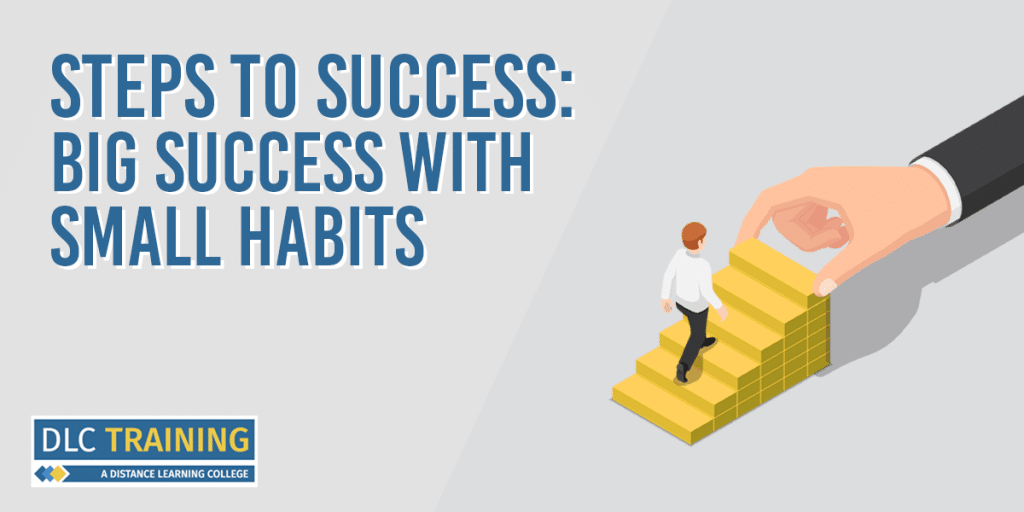Repetition is a key part of day-to-day life, and according to research, it dictates nearly half of what we do on any given day. In the second part of our Steps to Success blog series, we’re taking a look at repetition, routine, habits, and how to build them to achieve your goals.

Habits and Routines
The main differences between habits and routines are intent and awareness. People are often unaware of their habits, and do them without thinking or questioning them – something like having a snack or a cup of coffee.
Routines, however, are often somewhat forced (by others or ourselves), and they usually build to long-term goals that take concentration and effort in the short term – something like going to the gym.
So in many ways, they are almost opposites; one we do often and without thinking, the other we have to concentrate on making sure we stick to.
But how can we harness both, our habits and routines, to ensure that we accomplish our goals and achieve success?
Shaping Routines and Habits into Success
With habits and routines making up most of what people do on a daily basis, we can see that altering them and shaping them to lead towards our goals is key to getting where we want to go.
Gaining success is often more than writing a list of objectives and trying our best to achieve them, it is instead about building positive systems to build towards those objectives.
For example, if the goal is to “be healthier” and step 1 is to “lose weight”, that isn’t enough on its own. Instead how your day-to-day lifestyle, choices, and activities affect your weight (and overall health) is where you need to start.
Charles Duhigg, the author of The Power of Habit said that “there’s no such thing as 21 days to start a new habit”. Many pop psychology books and websites will claim that there are simple, quick, certain steps everyone can take to do things like build better habits, lose weight, and do more exercise. But in reality, the time it takes can be different for everyone.
So rather than focusing on quick hacks and simple solutions, the best place to start with adapting your routines and habits to ensure success is looking at what your end goal is, and assessing the steps to get you there.
Stepping Stones and Setbacks
Changing one behaviour or habit to affect another might sometimes seem like the long way round, and it’s easy to see small progress as bad progress.
A good example of this is something simple like drinking more water. At first, it might seem like a small change, but in a bigger sense, it has several benefits for our body, mental health, and general well-being that will, in turn, help with other goals and achievements.
If we look at this type of smaller goal setting and adapting routines as something positive like progressive stepping stones, rather than slow progress we can see how building habits around those smaller goals will help build towards our ultimate objectives.

The last, and most important step is giving yourself time. The biggest obstacle for most people is themselves. Giving up on a new diet, exercise, or hobby because you’ve not been able to put as much time into it or not made as much progress as you’d intended is no reason to give up. And ultimately this sort of thinking is what is stopping most people from succeeding. Small incremental progress is the best, giving yourself breaks, and setting small achievable goals is the best way to build up to the bigger goals and successes as a whole.
Don’t forget to take a look at the first part of our Steps to Success series, How to Define Success, and check back each month for a new entry. Get in touch with DLC Training today if you are ready for the next steps in your success story.